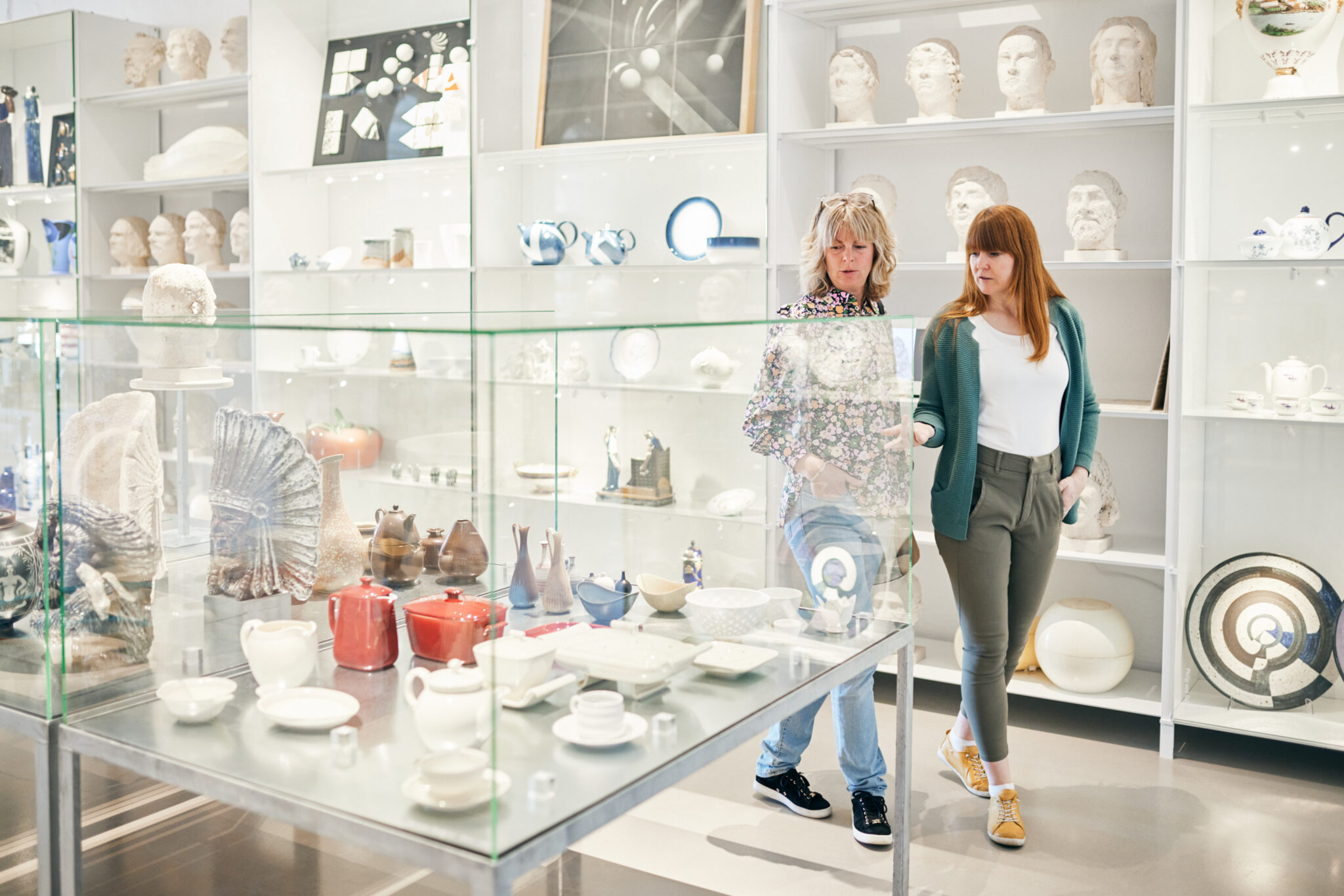A pilot project financed by the Västra Götaland region’s cultural committee where RISE Research Institutes of Sweden together with Rörstrand Museum develop a digital service that should be able to answer a question about Rörstrandsporslin.
Background
Rörstrand Museum receives approximately 1,500 porcelain inquiries annually. It’s great that the interest is so great, but unfortunately it takes a lot of resources to answer all the questions. By developing an AI service, more questions should be answered, the answers should be more useful and the work effort should be reduced. Read the full project description here.
RISE Research Institutes of Sweden interim report
The project team at RISE Research Institutes of Sweden is responsible for the technical development and consists of Ebba Ekblom, Niels Stor Swinkels, Martin Törnros, Jacob Michelsen, Olof Mogren RISE Research Institutes of Sweden. Project owner and overall project manager for Rörstrand Museum is My Johansson Dufva.
January – February
Start-up of projects and composition of competences and reference group. Acquisition of data and frameworks for the project, as well as started interface and obtained stakeholders for evaluation of the service.
March – April
The project is progressing according to plan with progress in the modeling of the data and presentation of the results.
Modeling
In the modeling part, RISE has mapped and prepared data for training models. Work on developing predictive models that can extract information from images has begun. This involves deep neural networks that are trained to classify the content based on a number of different properties of the object in the image.
This work involves developing the most appropriate machine learning model architecture based on deep neural networks or “deep learning” that will work well on the current data, a work that has come relatively far, but still has some work to do.
Currently, we have models that produce artist, year and object type with acceptable accuracy. Attributes that we will look at in the next few weeks are patterns, materials, crockery, technology and if time permits, stamps.
When a user of the tool uploads an image, the interface (front-end) will hand over the image to the model (back-end) which gives an answer about the object in the image. This will then be presented by the front-end part, which will also take in information about the aspects that the AI model has given in response. This can be texts from Wikipedia or books about artists, patterns, or crockery.
Data
In this project, we have initially looked at data from the object management system Carlotta http://83.223.9.232/carlotta-rs/web There are listings of objects with photographs and descriptions of various attributes created from Rörstrand Museum’s digitization project. We will also look at data from Kringla, as well as possibly images of porcelain stamps from signaturer.se. We also got access to a book, “Rörstrand’s tableware” by Bengt Nyström and Peter Stenberg. This book has a lot of information but would need to be transferred to more structured formats before it can be used for the AI modeling.
Object management The Carlotta system
In this data are objects with images and attributes, such as text description, size, inventory number, artist signature, material, model name, motif category, motif word, artist, product type, subject word, technology, year of manufacture, and more. About 4,000 images have been extracted from the database.
E-mail conversations Strong,
In the e-mail conversations that Rörstrand Museum previously had with people who asked about porcelain objects, there are questions and answers as well as pictures. These have been used to form an idea of what kinds of things people are wondering about, as well as what kinds of pictures people tend to submit.
Signaturer.se.,
On this website, many stamps and signatures are digitized. Both stamps for the manufacturer (Rörstrand) and artists who designed the objects. Both stamps for the manufacturer (Rörstrand) and artists who designed the objects.
Kringla,
This page contains many items from Rörstrand that are in other museums. We plan to include these in the modeled data.
Interaction
Within the interaction, an interface has been developed where functionality is continuously added. Currently, the tool can use a model from the AI modeling that determines the type of object represented by an image.
The interface follows the design from Rörstrands Museum’s website. The focus has been on designing for mobile phones, as the e-mail analysis pointed to the fact that many people use a smartphone to take pictures and ask the question. Various variations on the interaction have been developed and continue to be developed
The plan also includes extracting all possible information using the image analysis models developed above, and presenting it in a good way.
Dissemination of results
We have had a meeting with the follow-up group for the project. There the project and its progress were presented.
At the “RISE Computer Science & AI open house”, on May 10, Ebba Ekblom will present preliminary results from the modeling in the project.
Questions about the project?
Contact
Rörstrand Museum
My Johansson Dufva,
RISE Research Institutes of Sweden, Olof Mogren, olof.mogren@ri.se


